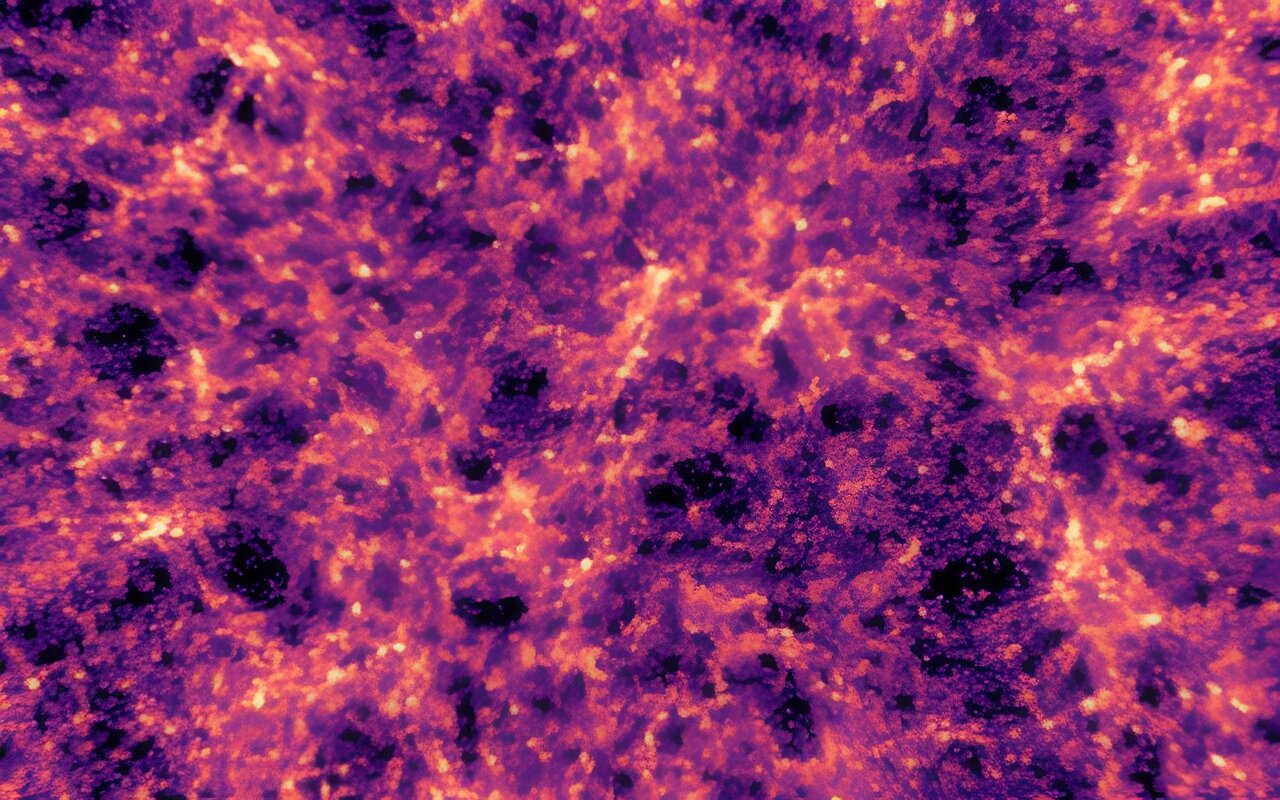Scientists use artificial intelligence to model the universe. It has helped to better understand what “dark matter” and “dark energy” are and what place they occupy in space.

Dark Energy Research
A research team led by University College London used artificial intelligence (AI) techniques to more accurately determine the effects and properties of dark energy based on a map of the distribution of matter in the universe spanning the last 7 billion years.
The study, published in the Monthly Notices of the Royal Astronomical Society, was conducted by a team of researchers from the Dark Energy Survey. Researchers have doubled the accuracy with which key characteristics of the universe, including the total density of dark energy, can be determined from a map.
This increased accuracy allows researchers to exclude models of the universe that might previously have been considered possible, which means that they refine our understanding of what is happening around us. Dark energy is a mysterious force that accelerates the expansion of the universe and is believed to account for about 70 percent of its contents. At the same time, dark matter, an invisible substance that attracts galaxies by gravity, is 25 percent, while normal matter is only 5 percent.
Artificial Intelligence and Universe Simulation
According to previous analyses of the Dark Energy Survey map, first published in 2021, the results indicate that matter in the universe is more evenly distributed — less lumpy — than Einstein’s theory of general relativity suggested. However, in this study, the discrepancy was less significant compared to the previous analysis, since the errors were larger.
The map of dark energy was obtained using a method called weak gravitational lensing, that is, observing how light from distant galaxies is bent by the gravity of intermediate matter on its way to Earth.
The team analyzed the curvature of the shapes of 100 million galaxies to infer the distribution of all matter, both dark and visible, in the foreground of these galaxies. The resulting map covers a quarter of the sky in the Southern Hemisphere. For the new study, scientists used UK government-funded supercomputers to simulate various universes based on data from the Dark Energy Survey matter map. Each simulation was based on its own mathematical model of the universe.
This new technique allowed the researchers to use much more information from the maps than was possible with the previous method. The simulation was carried out on a high-performance DiRAC computing complex.
Lead author of the study, Dr. Niall Jeffrey, said: “Using AI to learn from computer-simulated universes, we increased the precision of our estimates of key properties of the universe by a factor of two. To achieve this improvement without these novel techniques, we would need four times the amount of data. This would be equivalent to mapping another 300 million galaxies.”
According to phys.org
Follow us on Twitter to get the most interesting space news in time
https://twitter.comne/ust_magazi


